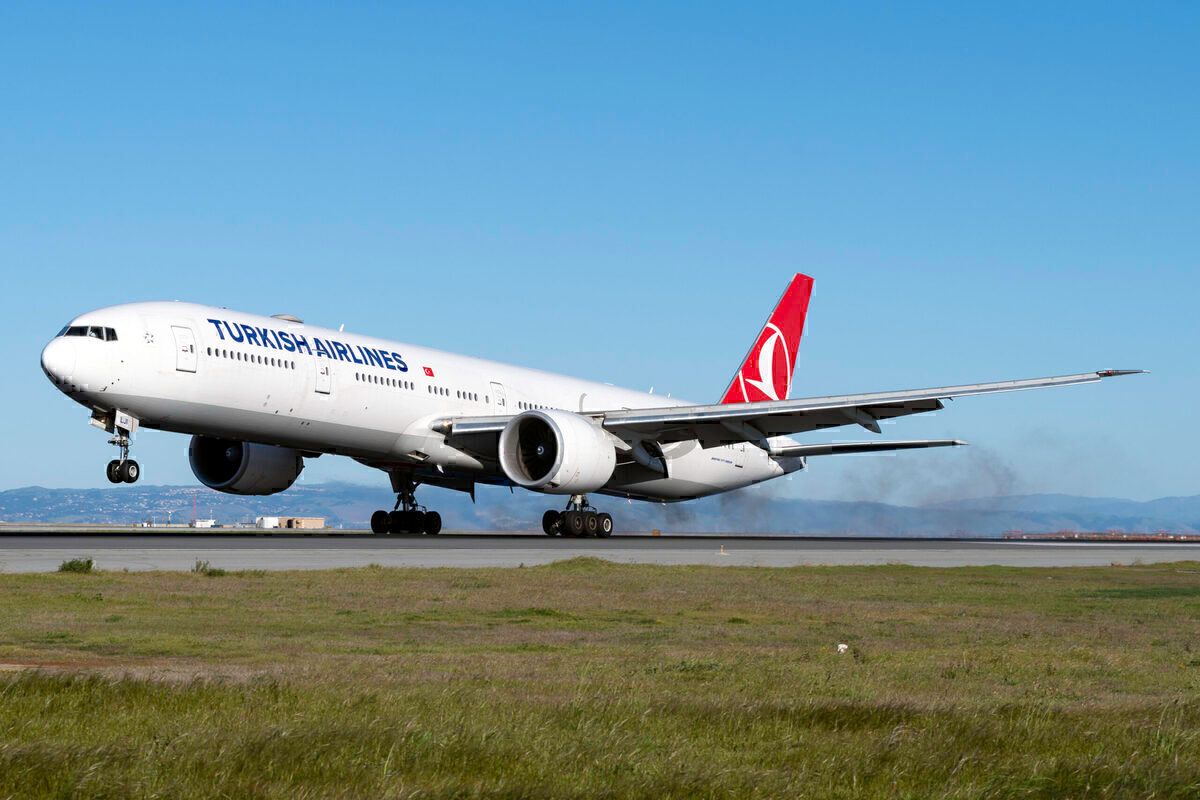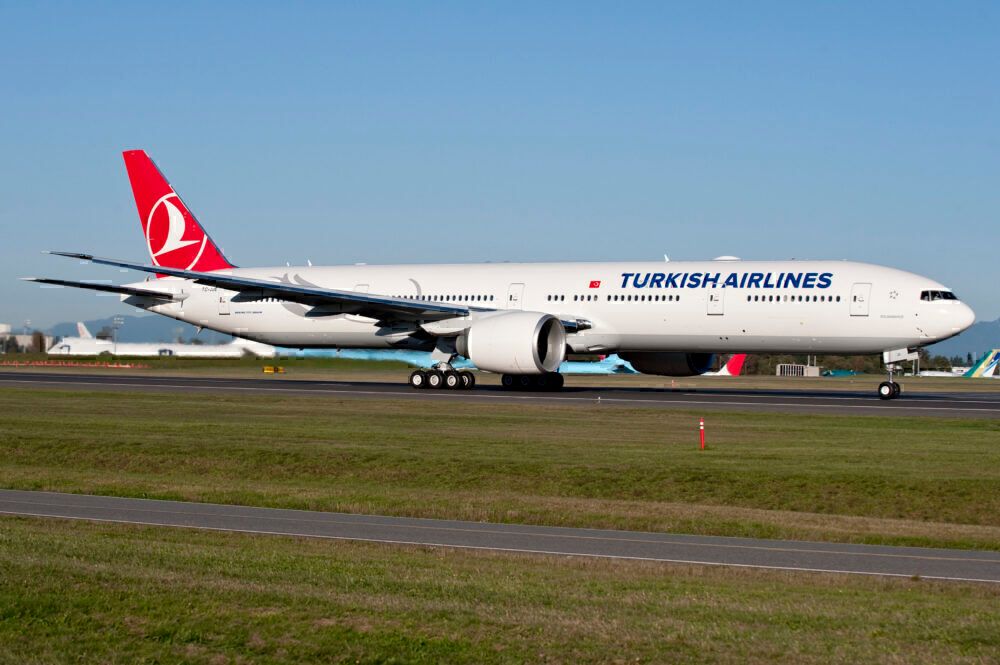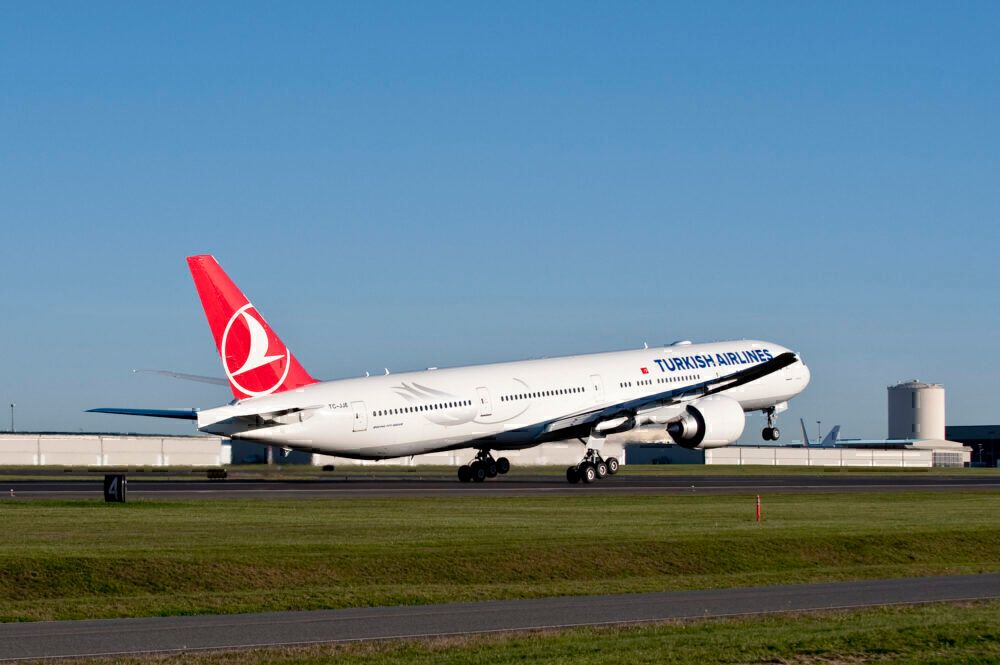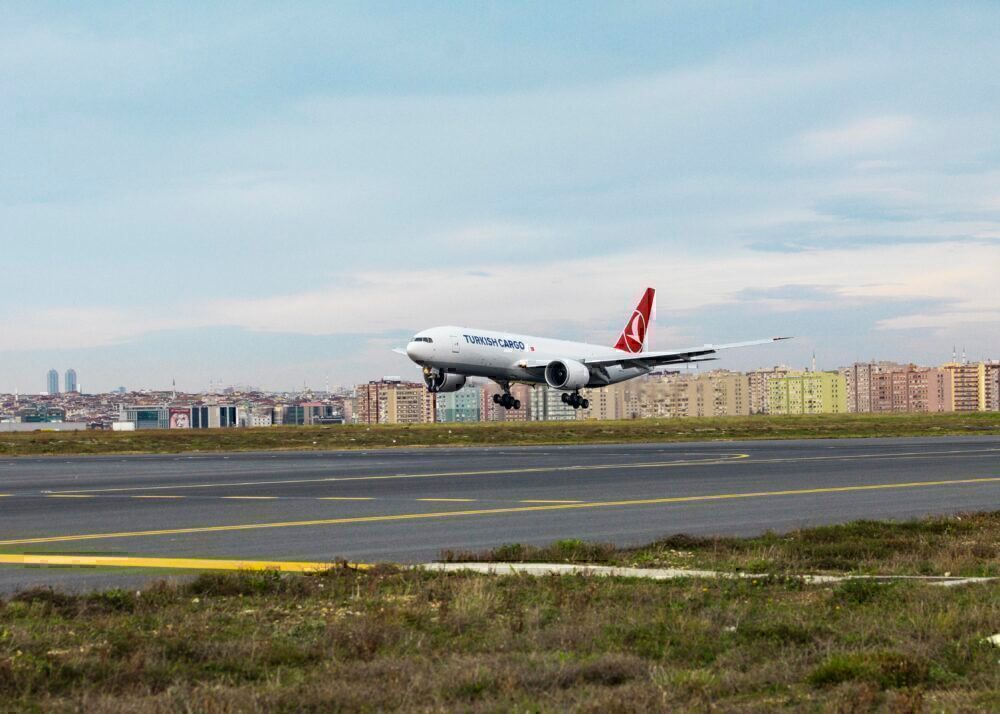Ten years ago, Turkish Airlines received its first Boeing 777-300ER purchased directly from Boeing by the flag carrier and came not too long after the airline put in leased 777s into service. Since then, the airline has grown its 777 fleet to 33 planes, including both owned and leased aircraft. Here is a look back at the airline's history with the 777-300ER.
Turkish Airlines orders the Boeing 777
On May 6th, 2009, Turkish Airlines placed an order for five Boeing 777-300ER aircraft. The airline already had leased 777-300ERs in its fleet, so it was familiar with the jet. However, this order was the first directly ordered 777. In July of that year, Turkish Airlines increased its 777-300ER order to 12 of the type.
In December of 2012, Boeing and Turkish Airlines agreed to an order for 15 additional 777-300ERs, taking the firm backlog to 27 777-300ERs. Turkish Airlines then grew this order by three to bring its overall directly ordered 777-300ER numbers to 30.
Turkish Airlines has leased another three aircraft. Kenya Airways, in Africa, leased out three 777-300ERs to Turkish Airlines, where these aircraft remain. Before this, Jet Airways had previously leased out 777-300ERs to Turkish Airlines, which were the first of the type to enter the airline's fleet.
The first Boeing 777-300ER for the carrier
On October 14th, 2010, Boeing delivered the first directly ordered 777-300ER to the carrier. This aircraft featured the airline's new business class cabin, and it was a joyous day. Hamdi Topcu, then-Chairman of Turkish Airlines, stated the following in a press release:
"Turkish Airlines continues to grow as a global airline with the 777 helping us to expand into new markets in Asia and the Americas. The addition of new Boeing 777-300ERs exemplifies our commitment to delivering high quality service and comfort to our passengers, while enabling us to continue our profitable growth."
Boeing's Commercial Airplanes division Vice President of sales, Marlin Dailey, stated the following:
"Turkish Airlines has demonstrated an exceptional commitment to set world-class standards for their operations. The 777-300ER is a great choice for Turkish, as the 777's high efficiency, spacious cabin, and industry-leading reliability combine to help the airline provide a superior passenger experience."
The registration of this aircraft is TC-JJE and is currently the oldest Boeing 777-300ER in the airline's fleet at ten years of age.
Turkish Airlines' 777-300ER
According to SeatGuru, Turkish Airlines has room for 349 passengers onboard its 777-300ERs, with 49 up front in lie-flat business class outfitted in a 2-3-2 configuration and 300 standard economy seats in a 3-3-3 configuration.
The 777-300ER is one of the airline's flagship aircraft. The plane flies some of the most important Turkish Airlines routes, such as to Beijing, London, Shanghai, Chicago, Hong Kong, Los Angeles, New York, and others. The plane can also be found on some high-demand domestic routes, such as between Izmir and Istanbul.
Turkish Airlines cargo 777s
Turkish Airlines also has a fleet of eight Boeing 777Fs. These dedicated cargo freighters are quite new, with the oldest one being only about two years old. All eight of these aircraft were also directly ordered from Boeing. However, the 777F is based on the smaller 777-200LR, which Turkish Airlines does not fly.
These aircraft do not solely fly in and out of Istanbul, the airline's prominent hub. These jets will be found flying wherever Turkish Airlines needs to fly cargo. In recent months, these planes have been pretty busy.
Have you flown a Turkish Airlines Boeing 777-300ER? Let us know in the comments!




